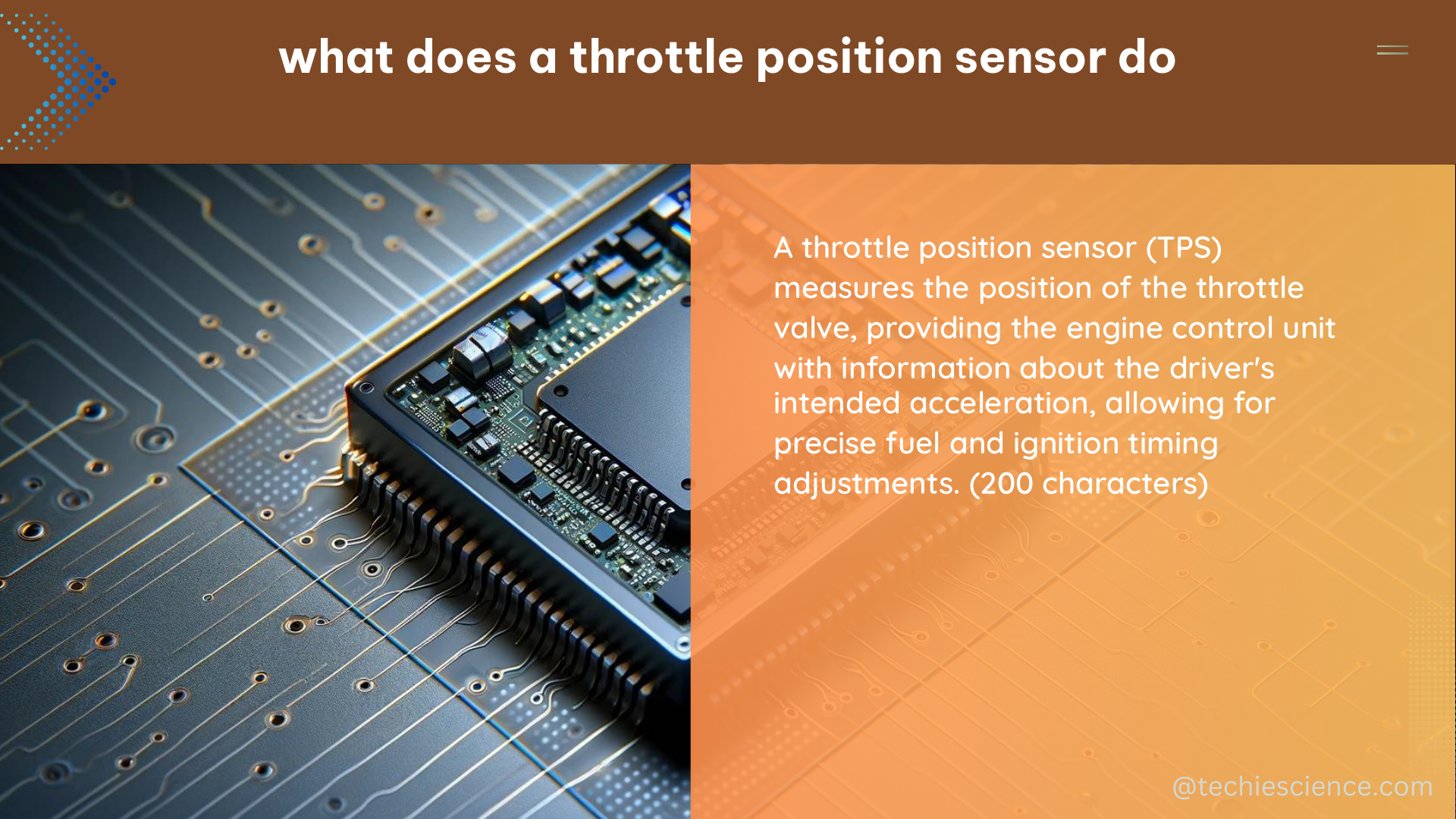A throttle position sensor (TPS) is a crucial component in a vehicle’s engine management system, responsible for monitoring the throttle valve position and providing feedback to the engine control unit (ECU) for precise control of various engine functions. The TPS is usually located on the butterfly spindle/shaft, allowing it to directly monitor the position of the throttle.
Technical Specifications of a Throttle Position Sensor
Voltage Signal Range
A typical TPS provides a voltage signal that varies with the throttle position, typically ranging from 0.2 to 4.5 volts. This voltage signal is directly proportional to the throttle opening angle, with a lower voltage indicating a closed throttle and a higher voltage indicating a wide-open throttle.
Sensor Element
The TPS sensor element is usually a potentiometer or a variable resistor, which changes resistance as the throttle position changes. The resistance value of the potentiometer or variable resistor is translated into a voltage signal that the ECU can interpret.
Sensor Technologies
Modern TPS sensors are non-contact type, using advanced technologies such as:
- Hall Effect Sensors: These sensors generate a voltage signal that changes with the magnetic field produced by a magnet mounted on the throttle spindle/shaft.
- Inductive Sensors: These sensors use an inductive loop mounted on the throttle spindle/shaft to generate a voltage signal that varies with the position of the throttle.
- Magnetoresistive Sensors: These sensors utilize the change in electrical resistance of a material in response to an applied magnetic field to produce a voltage signal that corresponds to the throttle position.
Signal Transmission to the ECU
The voltage signal generated by the TPS is transmitted to the ECU, which uses this information to perform various engine management functions, including:
- Engine Load Calculation: The ECU uses the TPS signal to determine the engine load, which is essential for adjusting the fuel delivery, ignition timing, and other engine parameters.
- Ignition Timing Control: The ECU adjusts the ignition timing based on the TPS signal to optimize engine performance and efficiency.
- Fuel Delivery Management: The ECU uses the TPS signal to control the fuel injection system, ensuring the appropriate amount of fuel is delivered to the engine based on the throttle position.
- Exhaust Gas Recirculation (EGR) System Control: The TPS signal is used by the ECU to manage the EGR system, which helps reduce emissions by recirculating a portion of the exhaust gas back into the engine.
- Torque Converter Clutch Operation: In vehicles equipped with an automatic transmission, the ECU uses the TPS signal to control the operation of the torque converter clutch, which can improve fuel efficiency.
DIY: Testing and Replacing a Throttle Position Sensor

Testing a Throttle Position Sensor
Testing a TPS can be done using a multimeter to measure the voltage signal at the sensor connector while operating the throttle. The voltage should vary smoothly as the throttle is opened and closed, and the voltage range should match the specifications provided by the manufacturer.
Symptoms of a Faulty Throttle Position Sensor
A faulty TPS can cause various driveability issues, including:
- Hesitation or stumbling during acceleration
- Rough idling or stalling
- Reduced engine power and performance
- Difficulty starting the engine
Replacing a Throttle Position Sensor
Replacing a TPS requires the following steps:
- Locate the throttle body and disconnect the sensor connector.
- Remove the throttle body and the TPS.
- Install the new TPS and reconnect the sensor connector.
- Reinstall the throttle body.
- Calibrate the TPS, if required, using a scan tool or by following a specific driving procedure.
References
- ResearchGate, “Throttle position control system”, https://www.researchgate.net/figure/Throttle-position-control-system_fig5_269272013
- ProSource Diesel, “Throttle Position Sensor – a Guide to the TPS”, https://prosourcediesel.com/blog/diesel-parts/throttle-position-sensor-a-guide-to-the-tps/
- StandardBrand, “Standard Just the Facts: Throttle Position Sensors”, https://www.standardbrand.com/media/9312/st10235th-feb14_jtf_throttlepos_a.pdf
- Variohm Eurosensor, “Throttle Position Sensor”, https://www.variohm.com/news-media/technical-blog-archive/throttle-position-sensor
- Wikipedia, “Throttle position sensor”, https://en.wikipedia.org/wiki/Throttle_position_sensor

The lambdageeks.com Core SME Team is a group of experienced subject matter experts from diverse scientific and technical fields including Physics, Chemistry, Technology,Electronics & Electrical Engineering, Automotive, Mechanical Engineering. Our team collaborates to create high-quality, well-researched articles on a wide range of science and technology topics for the lambdageeks.com website.
All Our Senior SME are having more than 7 Years of experience in the respective fields . They are either Working Industry Professionals or assocaited With different Universities. Refer Our Authors Page to get to know About our Core SMEs.